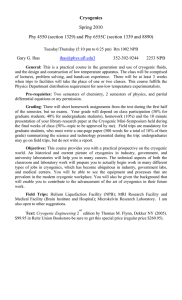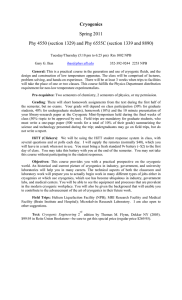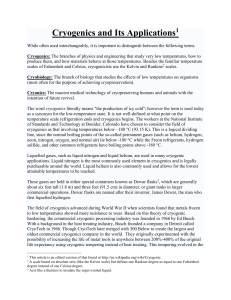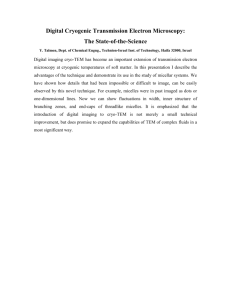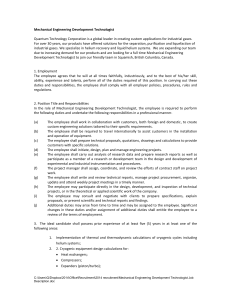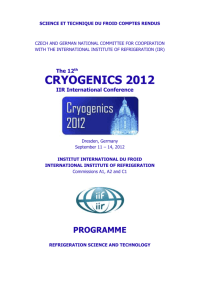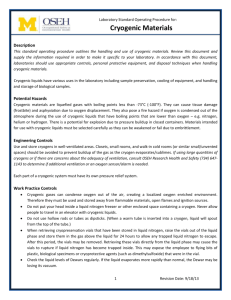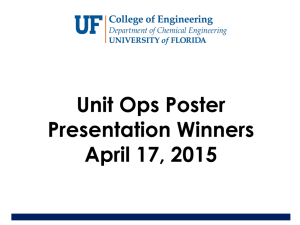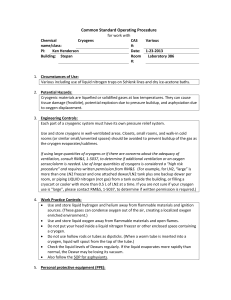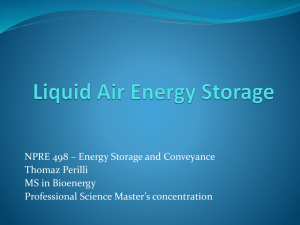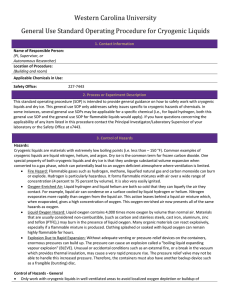Cryogenics Phy 4550 (section 1329) and Phy 6555C (section 1339)
advertisement
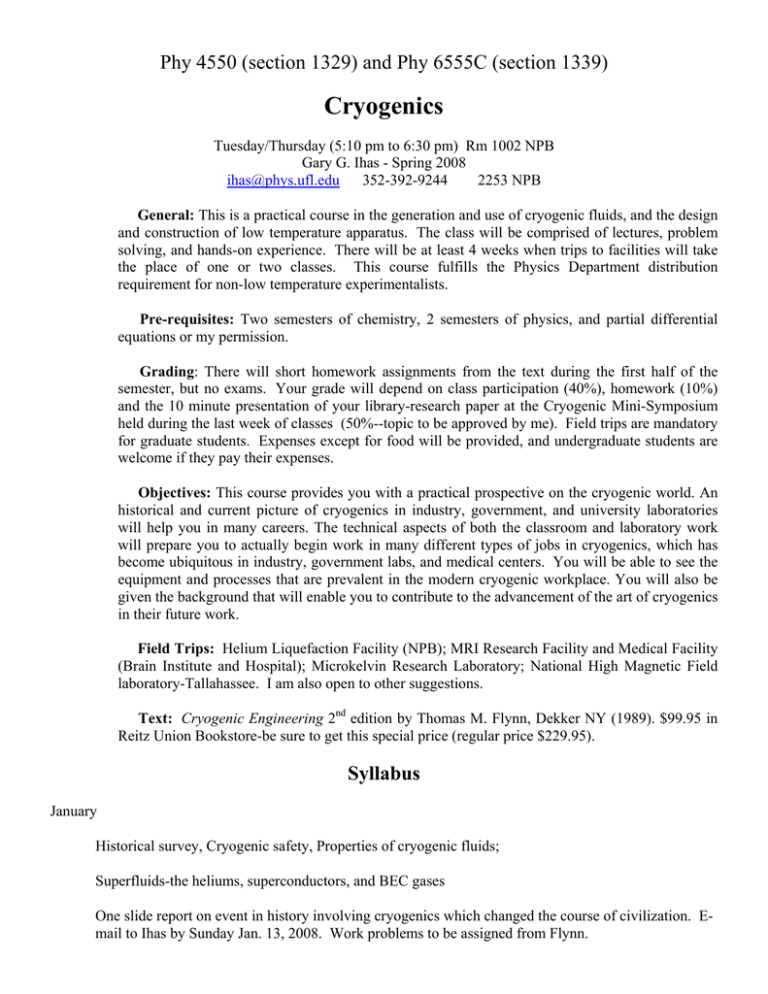
Phy 4550 (section 1329) and Phy 6555C (section 1339) Cryogenics Tuesday/Thursday (5:10 pm to 6:30 pm) Rm 1002 NPB Gary G. Ihas - Spring 2008 ihas@phys.ufl.edu 352-392-9244 2253 NPB General: This is a practical course in the generation and use of cryogenic fluids, and the design and construction of low temperature apparatus. The class will be comprised of lectures, problem solving, and hands-on experience. There will be at least 4 weeks when trips to facilities will take the place of one or two classes. This course fulfills the Physics Department distribution requirement for non-low temperature experimentalists. Pre-requisites: Two semesters of chemistry, 2 semesters of physics, and partial differential equations or my permission. Grading: There will short homework assignments from the text during the first half of the semester, but no exams. Your grade will depend on class participation (40%), homework (10%) and the 10 minute presentation of your library-research paper at the Cryogenic Mini-Symposium held during the last week of classes (50%--topic to be approved by me). Field trips are mandatory for graduate students. Expenses except for food will be provided, and undergraduate students are welcome if they pay their expenses. Objectives: This course provides you with a practical prospective on the cryogenic world. An historical and current picture of cryogenics in industry, government, and university laboratories will help you in many careers. The technical aspects of both the classroom and laboratory work will prepare you to actually begin work in many different types of jobs in cryogenics, which has become ubiquitous in industry, government labs, and medical centers. You will be able to see the equipment and processes that are prevalent in the modern cryogenic workplace. You will also be given the background that will enable you to contribute to the advancement of the art of cryogenics in their future work. Field Trips: Helium Liquefaction Facility (NPB); MRI Research Facility and Medical Facility (Brain Institute and Hospital); Microkelvin Research Laboratory; National High Magnetic Field laboratory-Tallahassee. I am also open to other suggestions. Text: Cryogenic Engineering 2nd edition by Thomas M. Flynn, Dekker NY (1989). $99.95 in Reitz Union Bookstore-be sure to get this special price (regular price $229.95). Syllabus January Historical survey, Cryogenic safety, Properties of cryogenic fluids; Superfluids-the heliums, superconductors, and BEC gases One slide report on event in history involving cryogenics which changed the course of civilization. Email to Ihas by Sunday Jan. 13, 2008. Work problems to be assigned from Flynn. February Superfluids-the heliums, superconductors, and BEC gases continued Low Temperature mechanical properties of materials Visit Microkelvin Lab March Quantum Turbulence—guest lecturer W. F. Vinen, FRS Select research paper topic No classes during March Meeting of APS or Spring Break Theory of refrigeration and liquefaction of gases Outline and references for research paper due Visit to helium liquefaction facility April Cryostat construction; Insulation techniques; Cryogenic instrumentation Visit Brain Institute Hydrogen economy Visit to National High Magnetic Field Laboratory Recycling trash and space applications Due date of research papers and of Cryogenic Symposium to be determined Reading List: Randall F. Barron, Cryogenic Systems (second edition) Raymond G. Becker, John Gorrie, M.D. (CarltonPress) Norman R. Brek, Cryogenic Recycling and Processing (CRC Press) B.A. Hands, Cryogenic Engineering (Academic) G.G. Haselden, Cryogenic Fundamentals (Academic) Ralph G. Scurlock, History and Origins of Cryogenics (Oxford) Steven W. Van Sciver, Helium Cryogenics ((Plenum)
